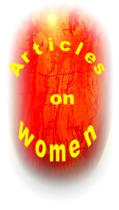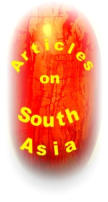

.





‘Knowledge is power’



World’s
encyclopedic
knowledge
compacted
in
your
hand





In order to understand rape in South Africa today, we need to understand its prevalence and nature in the past.
That, however, is very difficult, as rape statistics from the apartheid era – particularly those for non-white
populations – cannot be viewed as reliable. This is due to many factors, some of which are the following:
Prior to South Africa’s democratic transition, police resources were concentrated in white areas, with
policing in black areas being predominantly targeted towards political control. Township residents had little faith
in a ‘justice’ system that was at the same time being used to oppress them. As a result, apartheid-era crime
statistics are biased by under-reporting.
Worse still, complainants ran the risk of being seen as colluding with security forces. Writing about sexual
violence in 1994, Armstrong quotes an informant as saying that during apartheid ‘no black woman would go to
a police station … just to be seen near a police station might mean that you would be perceived as an
informer, your home would be burnt down and you would be killed.’
Furthermore, gender-based violence was seen as a potentially divisive problem that could be used politically
against black men and thereby divert attention from the pressing issue of racism.
It is also quite likely that even when black women reported being raped – to predominantly white police
officers – many were not taken seriously and their reports not recorded.
Before 1993, marital rape was not a crime and none of these assaults would have been included in any
statistics.
Under apartheid, the territory that is today South Africa contained a number of nominally independent
homelands and self-governing territories, each with their own police force. In total, prior to 1994, South Africa
had 11 different police agencies, with widely varying competencies in the collection of crime statistics. Crimes
reported in the so-called independent homelands were not included in national figures. Poor record-keeping
makes it impossible to even estimate pre-1994 levels of rape in those areas.
If we look at the decade preceding South Africa’s transition, we see that between 1983 and 1993, reported
rapes almost doubled from 15 342 to 27 056. Commentators expressed concern in the early nineties about
soaring rates of gender-based violence, linking it to the pernicious effect of apartheid in destroying family
structures through the enforcement of migrant labour policies and the perversion of South African
masculinities. In addition to the militarisation of South African male identities, as mentioned previously,
apartheid shamed and dishonoured black men by disregarding their human dignity and denying them access
to education, jobs and power over the affairs of their own country as well as in their own lives, thereby robbing
them of choice. White men were shamed and dishonoured by their role as oppressors, particularly those
conscripted into the armed forces. These collective masculine wounds expressed themselves not only in
armed struggle but were mirrored in a domestic struggle, where the home and the intimate lives of men
became a battle ground for reclaiming power in another sphere.
As South Africa began its transition to democracy in the early 1990s, it again saw a rapid increase in reported
rapes and other violent crimes.[7] Cases of reported rape increased from 27 056 in 1993 to a peak of 55 114
between April 2004 and March 2005, reflecting a prevalence rate of 118,3/100 000 of the population. This is
amongst the highest reported rates of rape in the world.
Although sexual violence, and crime generally, has been typified as a product of South Africa’s transition, the
popular focus on post-apartheid crime figures is probably misleading. Certain commentators linked the rising
levels of crime to political, economic and social trends which, although accentuated by rapid political reform,
originated before the political transition. In all likelihood, this position is correct. It is likely that the increases
seen during South Africa’s transition stem from a combination of three factors: increased reporting, better
record-keeping and actual increases in the prevalence of criminal offences.
Consequences for victims
The criminal justice system and rape
In 2010/2011 Rape Crisis saw over 2 700 rape survivors for direct support and this number increased to over 5
000 in 2011/2012. Some of these survivors had reported the matter and some had not. Those who had
reported, experienced the justice system in many instances as helpful, with distinct pockets of excellence
where dedicated officials went the extra mile on their behalf and made them believe that their case was being
taken very seriously. But even where this was the case in one area of the CJS, the opposite was usually true in
another, with the result that there was no one case where all parts of the system – police services, health
facilities and the courts – worked well and in a coordinated fashion to ensure a successful conviction.
Rape survivors describe their lack of support and consequent disempowerment as stemming from a range of
flaws within the justice system, which can best be summarised as follows:
Rape victims know little or nothing about this complex system before they enter it, and they find it almost
incomprehensible at times.
The system does little or nothing to inform survivors about the progress of their case and what is expected
of them with regard to next steps.
There is no provision made for survivors to receive any form of psychosocial care inside the justice system.
Officials are often biased against survivors and treat them insensitively or inappropriately, causing
secondary trauma.
Next

Please raise the vol to listen to the
lady airing awe @ the SINGLE author encyclopedia
You might also like:
20 of your tales of vegetarian woe
Men and Women Really Do See Things Differently
Scary Rape Statistics in South Africa & The World
SAARC Leaders Meet in Delhi: Did Modi And Sharif as Democrats
Transcend Borders to Unite Against The Pak Army?
Empowering Book Newsletter






WOMEN’S POWER: ITS PAST, ITS PRESENT, ITS FUTURE: FEMOCRACY
WEB PAGES
OUR OFFERING
UPLOADED ITEMS
OUR EMAIL
kri200@womenspowerbook.org
QUESTION




















